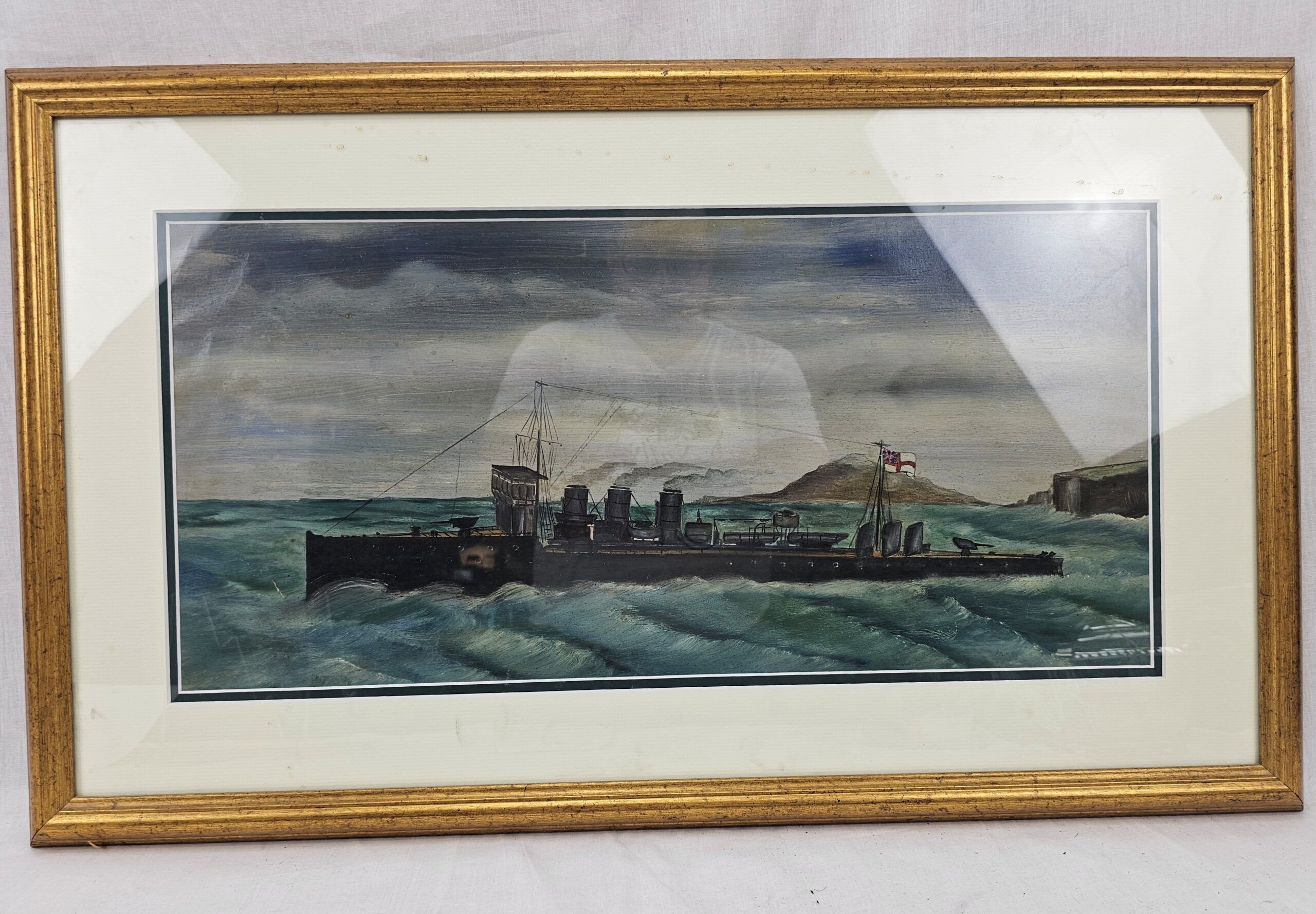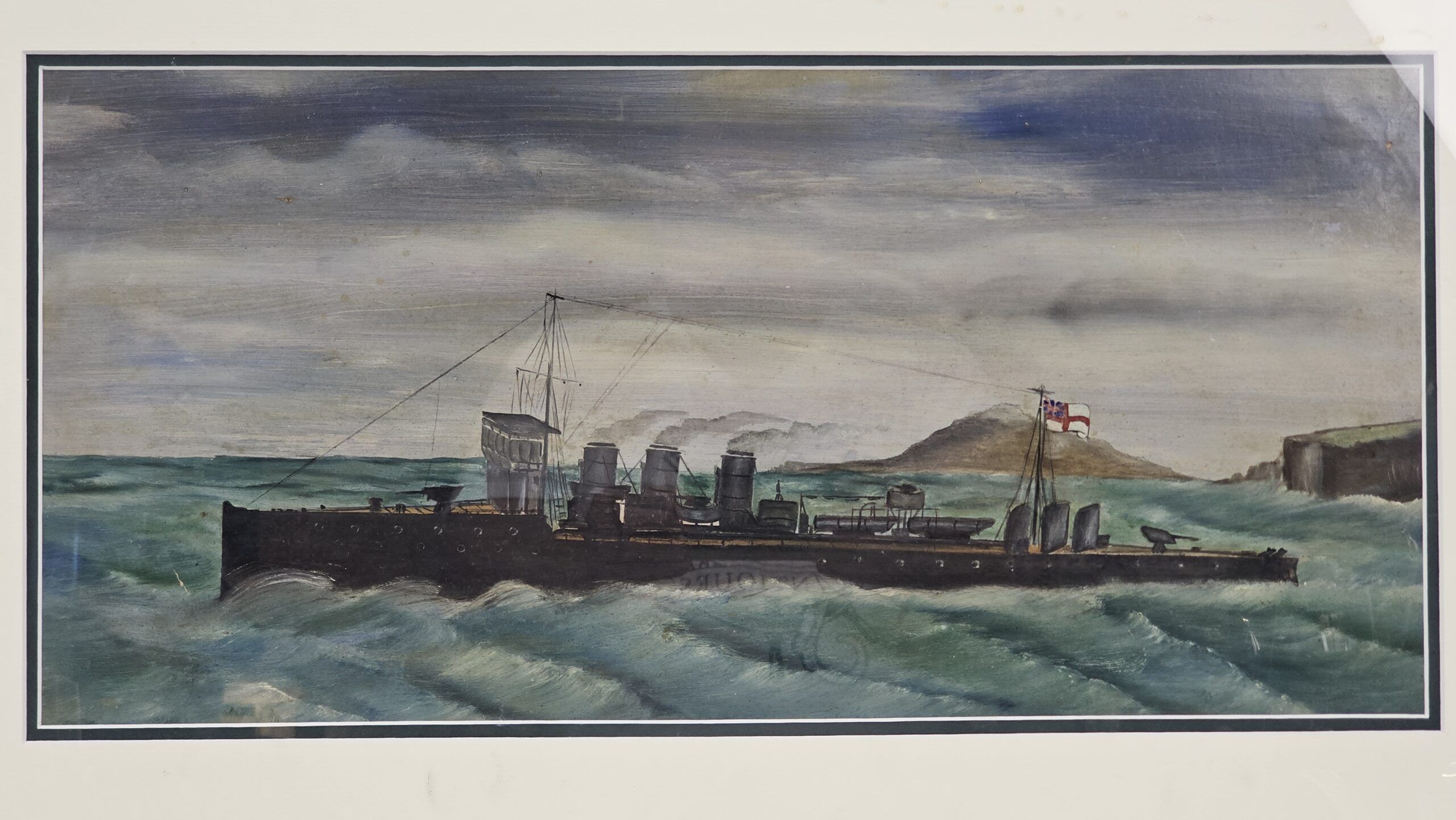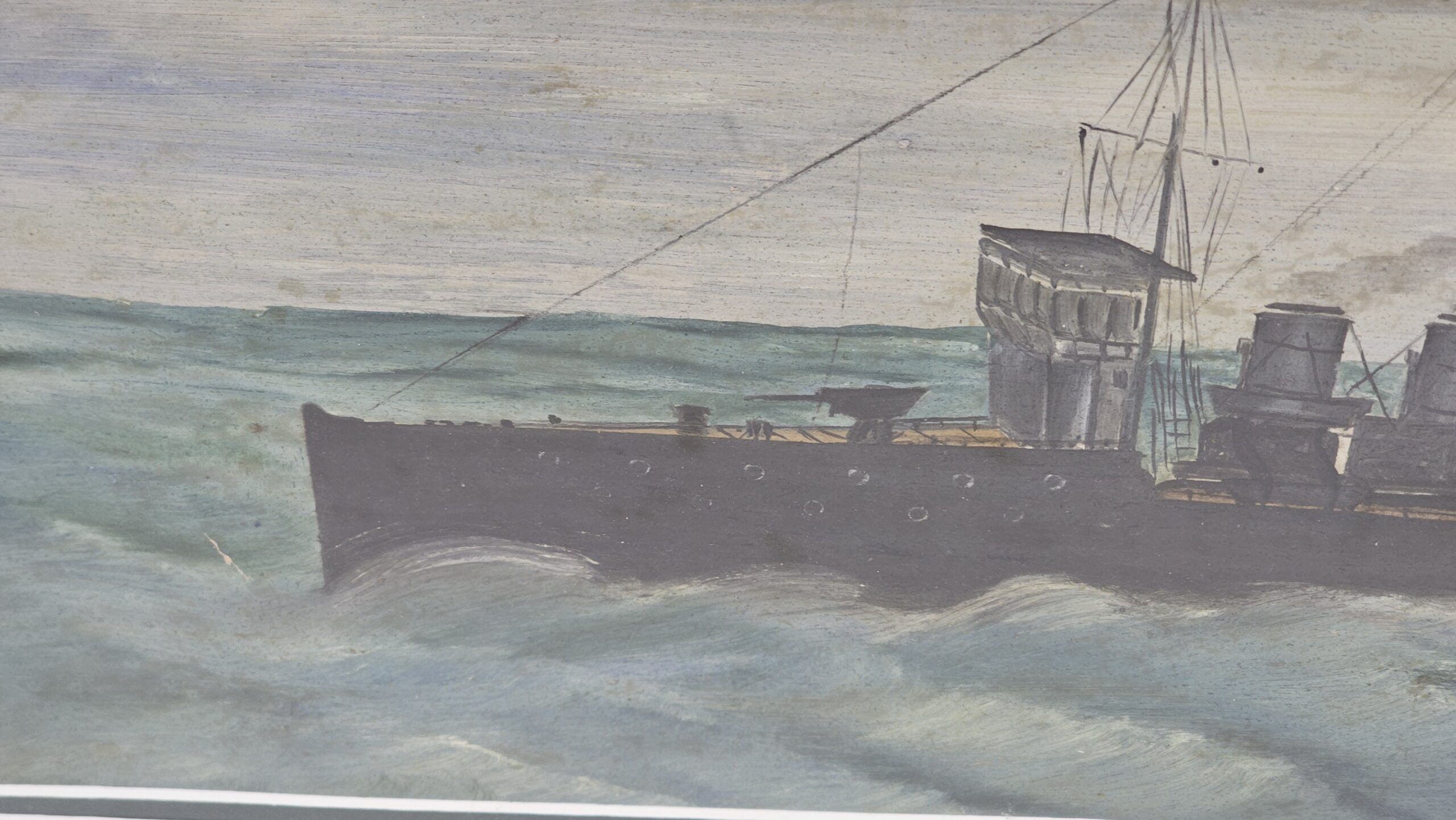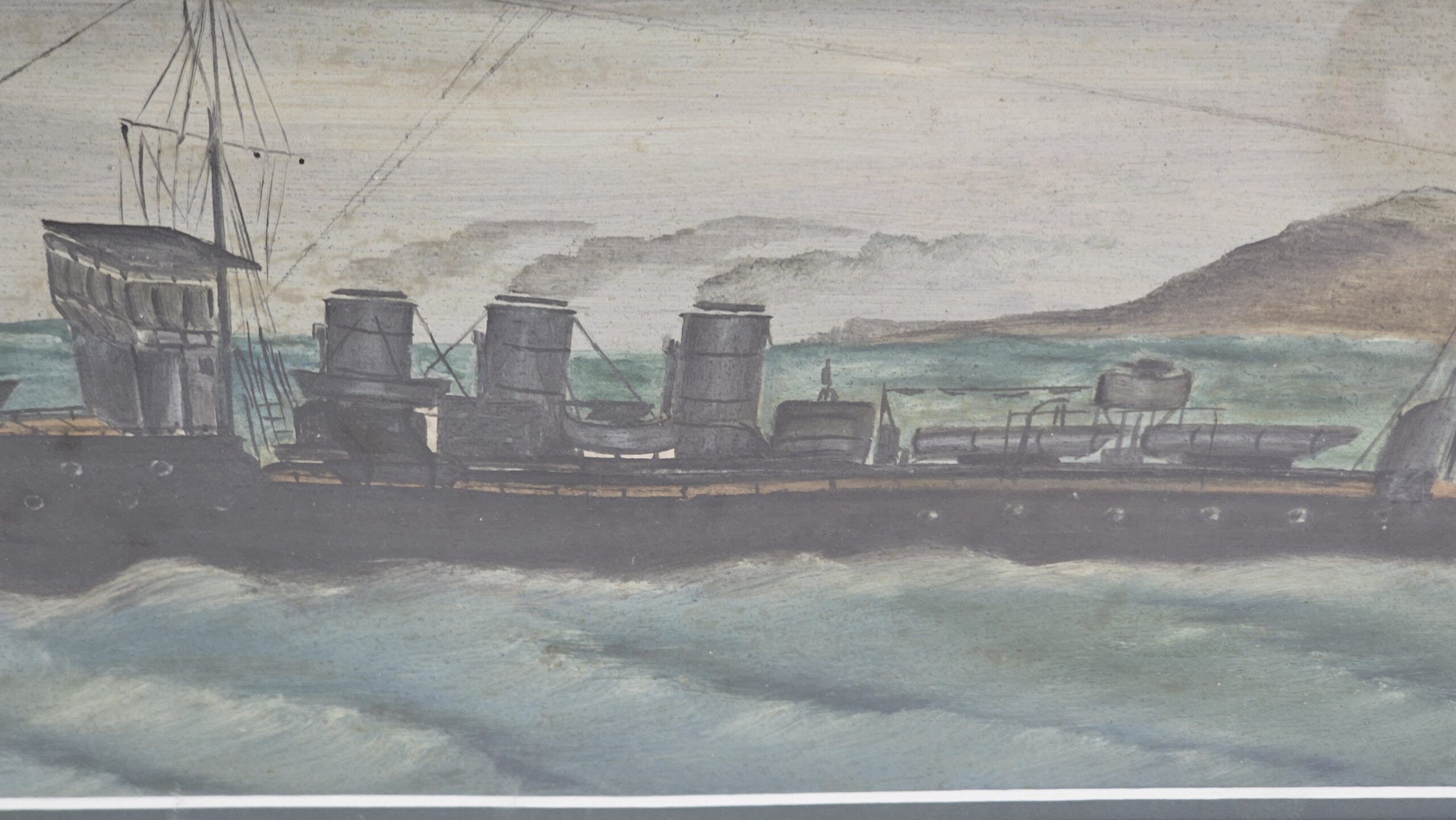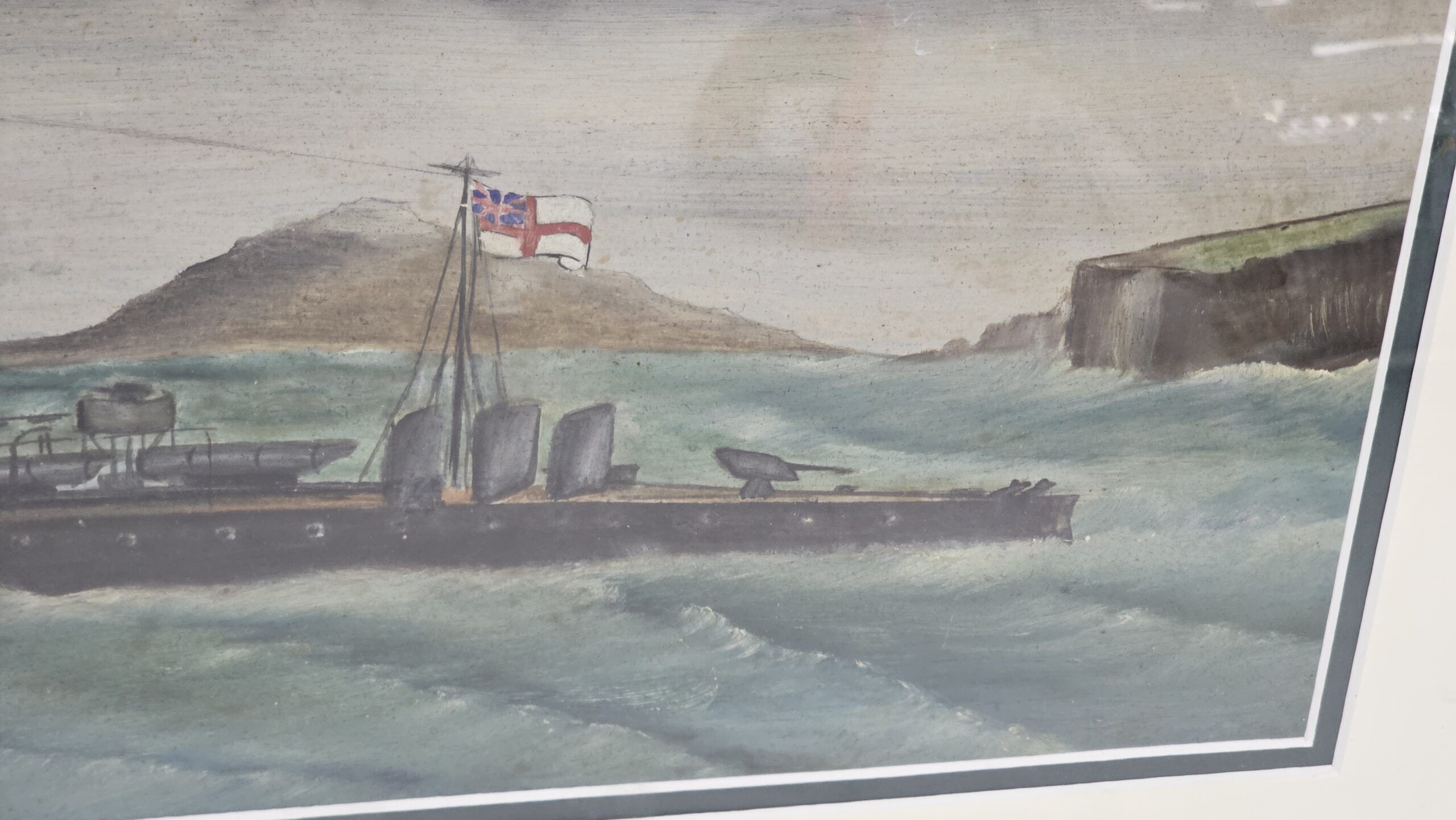~ Naive Oil of Torpedo Boat Destroyer c. 1910 ~
The painting depicts a British Royal Navy torpedo boat destroyer from around 1910, set against a backdrop of a turbulent sea and a cloudy sky. The ship is shown in profile, moving through the water, with waves breaking against its hull, highlighting the dynamic nature of the scene.
The destroyer has a dark-colored hull, typical of naval ships from this period, designed to minimize visibility. The vessel features four funnels, indicating its steam-powered engines, which were standard for destroyers of this era.
The ship is armed with torpedo tubes and likely a few deck guns, visible on the bow and stern, underscoring its role as a fast attack craft. The British White Ensign flag flies from the stern, signifying the ship’s allegiance to the Royal Navy.
The masts and rigging are visible, likely used for signal flags and possibly radio antennas, which were becoming more common in this era.
The sea is depicted with rough waves, suggesting that the ship is sailing in choppy waters, a common challenge for naval vessels.
In the background, there is a landmass, possibly a coastal area or an island, with a small hill or headland. This might indicate the ship’s proximity to shore, or it could simply serve as a compositional element to balance the scene.
The sky is cloudy with a mix of gray and blue tones, creating a somber and dramatic atmosphere that complements the dark tones of the ship.
The painting appears to be done in a naive or folk art style, characterized by a straightforward, unembellished approach to the subject matter. The details are somewhat simplified, and the focus is more on conveying the overall impression of the scene rather than precise technical accuracy.
The color palette is muted, with dark grays and blues dominating, which helps to evoke the seriousness and grimness of naval life.
The depicted ship is likely a torpedo boat destroyer, a class of warship designed to protect larger vessels from torpedo boats and to perform scouting and raiding missions. Around 1910, these ships were a vital part of the Royal Navy, as tensions in Europe were increasing leading up to World War I.
The scene captures the technological advancements of the time, with steam power and early 20th-century naval design elements clearly visible.
This painting serves as a historical representation of the British Royal Navy during a period of significant maritime innovation and geopolitical tension, just before the outbreak of World War I. The artist’s focus on the ship and its setting in a dramatic seascape emphasizes the importance of naval power and the constant challenges faced by those at sea.


